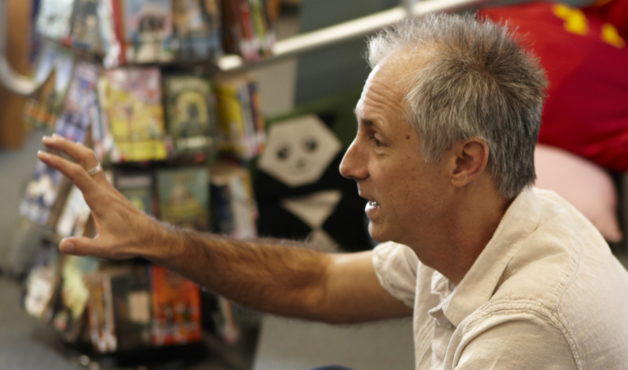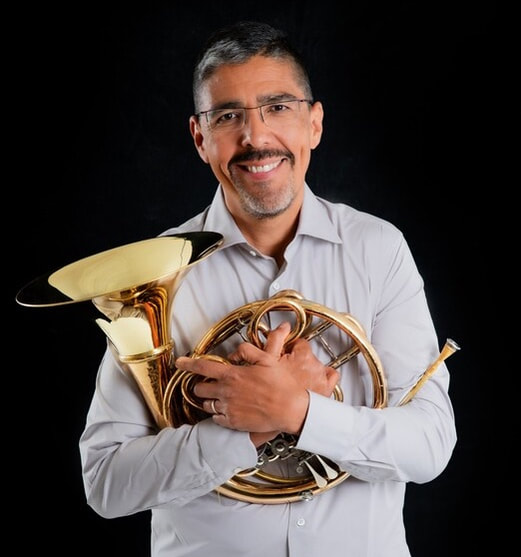Creative Education Symposium "Telling Our Stories" March 9, 2024
Registration closed
Opening Comments 9:00-10:30
These five people will set the stage for our learning. Click each of their images below to learn more.
These five people will set the stage for our learning. Click each of their images below to learn more.
Breakout Session ONE 10:45-12:00
|
California History through Diverse Perspectives, Visual Art and Poetry
Bethany Ibbitson & Jen Code The more we learn about California’s history, the more daunting it can be to teach. In this project, students explore this sensitive topic by approaching it through stories that address multiple perspectives. Two voice poetry and oil pastel artworks will be the means to acknowledge the diverse and often conflicting viewpoints in this integrated art project. This project was originally designed for perspectives on the California Missions, but extensions to applying this project to any situation involving two viewpoints will be explored. (ELA, SEL, etc) |
|
Telling our Stories Through Sound: Composer, Musician, Audience
Armando Castellano Telling our Stories Through Sound: Composer, Musician, Audience Do you want to bring more music into your classroom? First, we need to get comfortable with our own inner musicianship. When we better understand how music making works, and put that understanding into practice, our confidence to more regularly explore music with our students becomes apparent. When our students see our confidence, it allows them to more freely explore the creative decision making inherent in the performing arts. |
|
My Story Is Your Story, Too
Mo Harper-Desir Storytelling is the oldest form of history-keeping, entertainment, and tradition. Aren't some of your fondest memories stories from your past? Ones you might hear at family holidays about people you possibly never even met? Stories that tell who you are, speak to your legacy, or a future for which you’re striving? We can find the powers and gifts we possess by using our voices and our ears. In this workshop, participants will be guided through conversations on the importance of storytelling and empowering students through their stories. We will touch on topics of youth empowerment, representation, and the importance of individual stories as a part of the whole community. Then we’ll participate in three mini-activities teachers can take back to their students to weave storytelling into their curriculum and classroom culture. Activities will include creative writing, visual arts, and movement. |
|
Considerations for Sharing Native American Stories & Lessons
Maggie Peters Have you wondered about the origin of the stories we tell about Native Americans in school? Are you curious about whether those stories in our history books reflect the perspective of a living culture? Would you like to learn more about how to change the narrative to capture the vibrant Native American communities? Participants of this session will learn strategies for culturally responsive lesson development and take away resources in this "sneak peek" of the Native American Studies Model Curriculum, one of four model curricula for California's History- Social Science Project (CHSSP). |
Breakout Session TWO 1:00-2:15
|
Navigating Our Powers and Privileges in the Classroom and Beyond
Armando Castellano Facing systemic inequities all around us is hard work, many we don’t even see or notice. Navigating inequities in the classroom first requires us to examine how we use Power and Privilege in our everyday lives. Imagine taking stock of your “side of the street” in relation to these inequities: Where do they come up for us and for those around us? What emotions come up when we face these inequities? Let’s get vulnerable on these topics in a safe and supportive setting. |
|
Listen, Connect, Tell: The Power of Storytelling
Stuart Stotts "Do you want to hear a story?" These words of invitation are as old as human history, calling us to listen, imagine, and connect. Even in a world of technology, the power of stories engages us all, helping us to understand where we’ve been, where we are, and where we hope to go. There are learnable skills to telling stories. This workshop identifies and explores those skills through hands-on activities and small group interactions. A copy of Stuart’s book “Telling Tales: 14 Stories to Share with Young Children” is included for each participant. |
|
Voicing Our Stories Through Rhythm And Poetry (RAP)
Humboldt Hip Hop Congress with Special Guest Emcee Radioactive Have you ever heard words spoken rhythmically that move in calculated cadences and groove with funky beats then felt inspired to lift your own voice to speak? Hip Hop is a contagious cultural force worldwide and our students are tuned into it. Imagine spreading rhythm and rhymes through your classroom to build community, inspire imagination, and validate the voices of your young writers using the techniques and classroom exercises we will share with you. Participants will embody rap’s rhythmic and linguistic building blocks, and have a chance to craft and spit bars in small groups. |
|
SESSION FULL Telling a Karuk Story of Salmon in Words and Art Making
Lyn Risling Have you ever stared into an artwork and drifted into the story of the image? We'll take you on a journey of Native art images. These artworks are often inspired by creation stories, preserved through oral histories central to Native worldview, which have been passed down since time immemorial. Hupa/Karuk artist Lyn Risling will explore the Karuk story of how Salmon was introduced to Human Beings. We'll see Salmon's life cycle, from the river to the ocean and returning home to spawn while encountering obstacles and survival challenges. Participants will create a visual story of Salmon’s journey, correlating to their own experiences of resilience, facing challenges, and perseverance. |
Breakout Session THREE 2:30-3:45
|
VTS: Telling a Story About an Image
Bill Funkhouser & Heather Gaiera Have you ever looked at an image and thought, “I wonder what’s going on in this picture?” You start talking about the image with another person who adds insights you didn’t consider previously. Together you’re telling a story about the picture, possibly revealing what the artist was teaching or communicating. This process is formally structured as “VTS” or Visual Thinking Strategies, a student-centered facilitation method to create inclusive discussions. In this workshop, you’ll learn how to facilitate group discussions with viewers of almost any age. Together, the group you’re guiding will learn how to listen to each other’s ideas and build upon the inferences and evidence provided. |
|
Stand Up!: Our Songs and Our Voices Tell Our Stories
Stuart Stotts Music is a central part of most students’ lives; they listen, they sing, they dance. Think of children that you know who sing, hum, or tap out rhythms during the day. Teachers can use this natural affinity to motivate and engage students in the classroom while making connections to curricular or SEL topics. In addition, the emotional aspects of music make approaching what may be difficult topics more accessible. This creative process helps students explore their understanding while experiencing the joy of music. |
|
Telling Stories through Movement
Dionna Ndlovu Can you imagine not being able to see your reflection in the mirror? Our students need you to hold up many mirrors to see their own reflections and envision the future. The Afrofuturistic framework and Afrocentric SEL strategies will activate participants’ imagination, inspire technological concepts, and catalyze liberatory learning by practicing self-empowerment, shifting social power dynamics, and collective active rest. Experience somatic and expressive movement techniques, African Diasporic dance styles and classroom management dance strategies. |
|
Queering Clay - Storytelling Through Sculpture
Sade Perez Picture a child, brave and terrified, grappling with their identity. Imagine having the ability to provide that child with an experience that allows them to feel engaged, supported, and valued by giving them a tangible story. Encouraging vulnerability, communication development, and allyship, participants will use clay sculpture to tell memorable stories and learn techniques to engage queer youth more positively. |


















